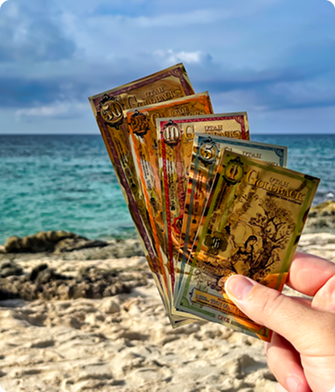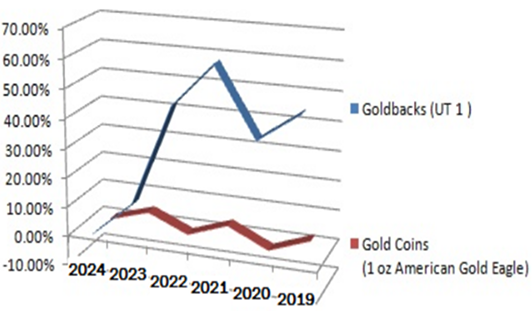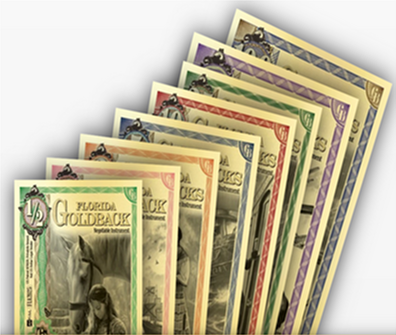Goldbacks: Real Money

24k Gold Innovation

Meant To Be Spent
These revolutionary gold instruments are denominated, fungible, portable, uniquely recognizable, and uniform. In this way, they are convenient to handle and combine as needed to be used in trade for day-to-day products and services. In this way, Goldbacks are the ideal solution for conducting private, everyday transactions. In fact, thousands of local merchants all across American now prefer Goldbacks over fiat currencies.


Unprecedented Anti-Counterfeiting Measures
To prevent counterfeiting, each Goldback not only contains intricate artwork, the patent number, and a unique serial number, but high-tech microscopic and macroscopic security features are employed as well. These features include a double helix, a raised, reversed image on the back, and microscopic patterns around the artwork. These features ensure that they won’t join the financial contagion of counterfeit “gold” coins and bars that have flooded the market in recent years.

High Numismatic Collectible Value
Goldback Truth Vs. Fiction
Myth #1: Goldbacks aren’t real gold.
Fact: Every Goldback contains precisely measured 24-karat gold—permanently encased in layers of protective polymer. They also carry advanced security features, ensuring that each one holds real gold. They are not gold foil or gold plated.
Myth #2: Goldbacks are illegal.
Myth #3: Goldbacks are unnecessary because gold coins already exist.
Myth #4: Goldbacks have a higher premium than necessary.
Myth #5: You can find fake Goldbacks on Alibaba.

